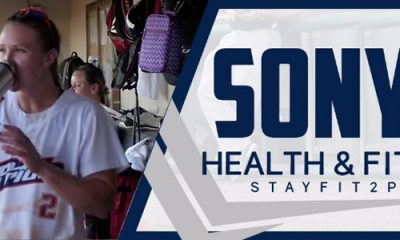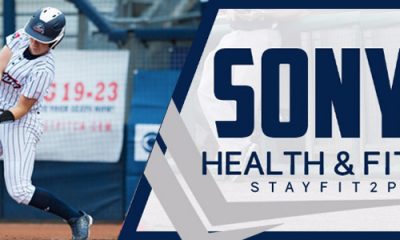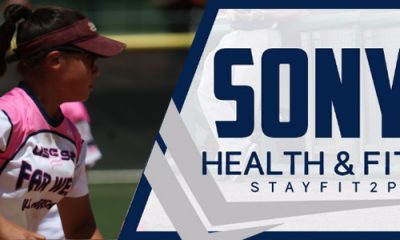 Everyone has at some point in their life had a few aches and pains that come and go and most concern goes out the window. Although there are those moments when aches and pains linger. Probably one of the most common ailments I receive questions about relates to heel pain in young and older athletes. This problem arises despite the sport or activity required of the athlete.
Everyone has at some point in their life had a few aches and pains that come and go and most concern goes out the window. Although there are those moments when aches and pains linger. Probably one of the most common ailments I receive questions about relates to heel pain in young and older athletes. This problem arises despite the sport or activity required of the athlete.
My job often requires looking at an injury much like a detective sorts out a crime scene; for example you list all the signs and symptoms, compile an extensive history, and start piecing together all evidence which often revels why the heel pain has started in the first place. Pain that often starts in the heel for some athletes usually starts after some change in training or the addition of some new activity. Some of these training changes include the extension of practice time or the addition of distance running to an unaccustomed athlete. Even something as minor as the change in surface for which your athlete is training can impact their bodies. If heel pain persists and is a chronic injury then I tend to look at foot structure and the activity that causes the pain to occur.
Sometimes with pre adolescent athletes that are in sports that require a great deal of running such as basketball, soccer, or even tennis the occurrence of heel pain occurs quite frequently.
Heel pain that occurs with some athletes that extends onto the bottom of one’s foot is called Plantar Fasciitis or the inflammation of the thick fibrous material that covers the tendons and foot muscles that make up the arch in the foot. This can be a very painful and chronic condition where athletes experience a great deal of pain when running or even walking. If not treated Plantar Fasciitis may lead to a heel spur, which occurs, on the bottom of the heel bone or the Calcaneus being pulled off by the Plantar Fascia. This diagnosis can only really be proven by an x-ray but it may explain the painful extent of the symptoms.
A common heel pain in younger children is called calcaneal Apophysitis or Sever’s disease, which basically is growing pain condition that occurs when a child’s bone grows faster than the surrounding ligaments and muscles. Often times the lower leg bones the Tibia and Fibula and the heel bone or the Calcaneus starts growing faster and the Achilles Tendon and calf which causes tension where the Achilles Tendon connect to the Calcaneus. This juncture point is where pain will start, causing minor swelling, and may even cause your athlete to be benched from activity until the irritation resolves. Generally this issue is resolved with some time and rest from activity and may not cause any long-term damage but following up with a health care professional may be necessary to rule other out the need for prescribed orthotics or support footwear inserts.
Not all young athletes experience this heel pain but often the ones that do mechanically have a foot structure where they over pronate or roll inward with their ankle as they walk causing the arch of the foot to flattens out. Some other issues that may cause heel pain in any athlete not just young ones with Sever’s disease are poor supportive footwear; tight calve muscles and tendons in the foot as well. With any athlete I always recommend to parents that if their child has an issues that persists or is painful enough without any memorable incident to get it checked by a health care professional just to be safe.
Here are some very simple ways to combat some heel pain in young athletes or prevent further issues when pain begins:
- Towel stretches: is a stretch utilizing a towel or rope and the athlete in the sitting position with their legs extended. I usually instruct the athlete to use a towel and place it around their foot just below the toes so that you have some leverage to pull back which is when they should feel a stretch along their Plantar Fascia or arch of their foot. I recommend any athlete do this stretch at least 4 times and hold the stretch for 15 to 20 seconds several times a day. This is especially important in the morning when most of the discomfort is generally felt.
- Calve stretching is another important stretch to ensure the Gastrocnemius muscle does not get overly tight which will then place more stress further down the leg along the Achilles tendon or Plantar Fascia. This stretch is often known by everyone but rarely done enough so I just instruct athletes to keep it as part of their daily routine (4 times with a 15 to 20 second hold).
- Ice bottle massage: is a simple way to help keep inflammation along the bottom of the plantar fascia at a low after activity. I instruct athletes to get a normal plastic water bottle fill it with water place the cap back on and then put it in the freezer. Once the bottle has frozen you can place it on the floor usually over a towel and then instruct the athlete to be in a sitting position and place their foot over the water bottle and roll it back and forth form the front of their foot to the heel. This simple task can be done while watching tv or doing normal activities for at least 5-7 minutes.
- Medication: this is not something I often suggest quickly but if the pain is to the point that your athlete cannot play or is having to limit their activity level some ibuprofen or acetaminophen may be necessary to help the athlete at least be able to go about their daily activities without discomfort. I urge that this is not the solution but something to add with all the other things I have suggested and follow up with a healthcare professional if the problem persists.
- Proper footwear: I cannot emphasize this enough, ensuring your athletes are competing in the footwear that is supportive enough and correct for their foot structure may help prevent a great number of issues. I realize the cost of footwear as of recent has become a bit ridiculous but I often urge parents to not look for proper footwear in the mall where fashion, brands, and looks seems to be emphasized. Most towns or cities have shops specific to the sport your child participates in which often carries specialized equipment. For example for general running/training shoes I suggest looking up a running store that carries a wide variety of shoes and price ranges. These stores generally have someone working there who understands foot structure and what type of shoe your athlete may benefit from, along with finding a reasonable price.
Follow Sonya on Twitter: @SonyaMontoya2
About USSSA Florida Pride:
The USSSA Florida Pride is a professional franchise in the National Pro Fastpitch League that is owned and operated by USSSA. The amateur organization of USSSA has multi-sport coverage and encompasses teams and players from the United States and abroad.
About NPF:
National Pro Fastpitch is headquartered in Nashville, TN. The league, created to give elite female fastpitch players the opportunity to pursue a professional career in their chosen sport, has operated since 1997 under the names of Women’s Pro Fastpitch (WPF) and Women’s Pro Softball League (WPSL). NPF is the Official Development Partner of Major League Baseball in the category of women’s fastpitch softball since 2002.
About USSSA:
The United States Specialty Sports Association (USSSA), headquartered in Osceola County, Florida, USSSA is the World’s Largest Multi-sport Athletic Organization. Founded in 1968, USSSA has grown to over 3.7 million participants, competing in 13 nationally sanctioned sports including Baseball, Fastpitch, Slow Pitch, Karate, Basketball, Soccer and more! For more information on USSSA and to register your team visit USSSA.com. Also be sure to visit USSSAToday.com for the latest USSSA News!












You must be logged in to post a comment Login